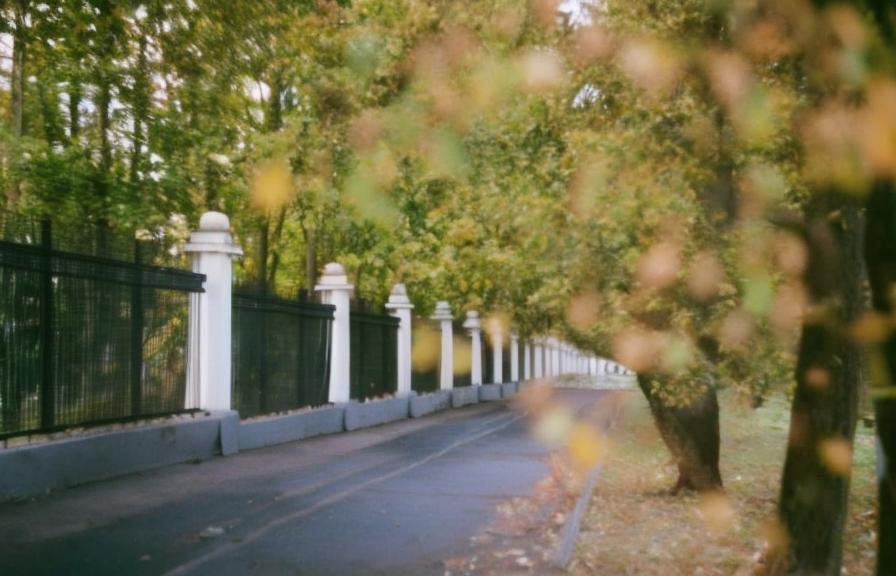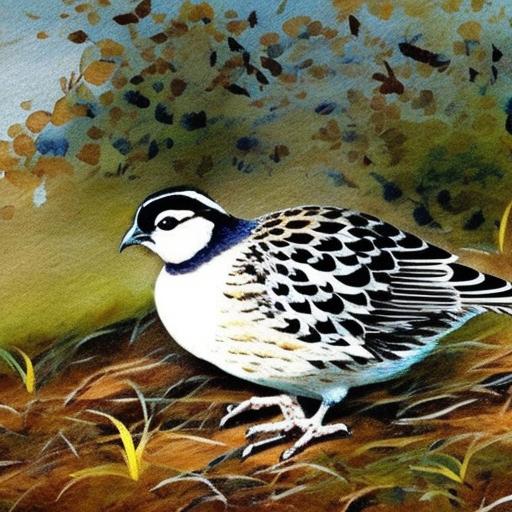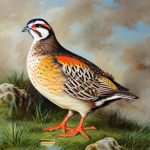Quails are small birds that have specific needs when it comes to their living environment. Understanding these needs is crucial in order to provide them with a healthy and comfortable living space. Quails are social birds and thrive in groups, so it’s important to consider the size of the cage and the number of quails you plan to keep. They also need space to move around and exercise, so a cage that allows for ample room to roam is essential. Additionally, quails are ground-dwelling birds, so they require a cage with a solid floor rather than wire mesh. This will prevent their feet from getting injured and provide a more natural environment for them.
Quails also need a warm and dry environment, so the cage should be placed in a location that is sheltered from extreme weather conditions. They are also sensitive to drafts, so the cage should be well-ventilated but protected from strong winds. Quails are also known for being good at escaping, so the cage should be secure and escape-proof. Understanding these needs will help you create a suitable living space for your quails.
Quails also need a warm and dry environment, so the cage should be placed in a location that is sheltered from extreme weather conditions. They are also sensitive to drafts, so the cage should be well-ventilated but protected from strong winds. Quails are also known for being good at escaping, so the cage should be secure and escape-proof. Understanding these needs will help you create a suitable living space for your quails.
Key Takeaways
- Quails need a cage with enough space for nesting, perching, and movement
- The right materials for the cage are sturdy, easy to clean, and provide good ventilation
- The layout of the cage should include separate areas for nesting, perching, and feeding
- Construct the cage with attention to detail and ensure it is secure and safe for the quails
- Nesting boxes and perches should be added to provide comfort and stimulation for the quails
- Food and water access should be easily available and kept clean to ensure the quails’ health
- Regular cleaning and maintenance of the cage is essential for the well-being of the quails
Choosing the right materials for the cage
When it comes to choosing materials for your quail breeding cage, there are several factors to consider. The first consideration is the size and strength of the materials. Quails are active birds and can be quite strong, so it’s important to choose materials that are durable and can withstand their activity. Additionally, the materials should be easy to clean and maintain, as hygiene is crucial for the health of your quails.
Another important factor to consider is the safety of the materials. Quails are curious birds and may peck at or ingest materials in their environment. It’s important to choose materials that are non-toxic and safe for your quails to be around. Additionally, the materials should be free from sharp edges or protrusions that could potentially injure your quails.
Finally, consider the cost and availability of the materials. While it’s important to choose high-quality materials, it’s also important to consider your budget and the availability of the materials in your area. By carefully considering these factors, you can choose the right materials for your quail breeding cage that will provide a safe and comfortable living environment for your birds.
Designing the layout of the cage
The layout of your quail breeding cage is an important aspect of providing a suitable living space for your birds. When designing the layout, consider the needs of your quails and how they will use the space. Quails need room to move around and exercise, so the layout should allow for ample space for them to roam. Additionally, consider providing areas for dust bathing, as this is a natural behavior for quails and helps keep their feathers clean and healthy.
Another important aspect of the layout is providing hiding spots and shelter for your quails. Quails are ground-dwelling birds and feel most comfortable when they have places to hide and feel secure. Consider adding shelters or hiding spots within the cage where your quails can retreat to if they feel stressed or threatened.
Finally, consider the placement of food and water sources within the cage. These should be easily accessible to your quails and placed in a way that prevents contamination from droppings or bedding. By carefully designing the layout of your quail breeding cage, you can create a comfortable and functional living space for your birds.
Constructing the cage
Constructing a quail breeding cage requires careful planning and attention to detail in order to provide a safe and secure living environment for your birds. When constructing the cage, it’s important to ensure that all materials are securely fastened and that there are no gaps or openings where your quails could escape. Additionally, consider reinforcing any weak points in the structure to prevent damage from your quails’ activity.
Another important consideration when constructing the cage is providing easy access for cleaning and maintenance. The cage should be designed in a way that allows you to easily remove bedding, clean surfaces, and access food and water sources without causing stress to your quails. Additionally, consider adding features such as removable trays or doors that make it easier to access different areas of the cage.
Finally, consider adding features such as perches or platforms within the cage to provide additional space for your quails to move around and exercise. By carefully constructing the cage with these considerations in mind, you can create a safe and comfortable living space for your quails.
Adding nesting boxes and perches
Nesting boxes and perches are important additions to a quail breeding cage that provide essential features for your birds’ comfort and well-being. Nesting boxes provide a safe and private space for your quails to lay their eggs, which is essential for successful breeding. When adding nesting boxes to your cage, ensure that they are placed in a quiet and secluded area where your quails will feel safe laying their eggs.
Perches are also important additions to a quail breeding cage as they provide elevated spaces for your birds to rest and exercise. Quails are ground-dwelling birds but still benefit from having perches within their living environment. When adding perches, ensure that they are securely fastened and provide enough space for all of your quails to roost comfortably.
When adding nesting boxes and perches to your quail breeding cage, consider the size of your cage and the number of quails you plan to keep. Ensure that there are enough nesting boxes and perches for all of your birds to use without overcrowding. By carefully adding these features to your cage, you can create a comfortable and functional living space for your quails.
Providing food and water access

Providing easy access to food and water is essential for maintaining the health and well-being of your quails in a breeding cage. When setting up food and water sources within the cage, consider the number of quails you plan to keep and ensure that there are enough feeding and drinking areas for all of your birds. Additionally, place food and water sources in areas that are easily accessible but protected from contamination by droppings or bedding.
When choosing food for your quails, consider their specific dietary needs and provide a balanced diet that includes grains, seeds, greens, and protein sources such as mealworms or crickets. Ensure that food sources are replenished regularly to prevent hunger or malnutrition in your birds.
Similarly, provide clean water sources that are easily accessible to your quails at all times. Consider using waterers that prevent spillage or contamination by bedding or droppings. By providing easy access to food and water within the cage, you can ensure that your quails have everything they need to thrive in their breeding environment.
Maintaining the quail breeding cage
Maintaining a clean and hygienic environment is essential for the health and well-being of your quails in a breeding cage. Regular cleaning and maintenance tasks include removing soiled bedding, cleaning surfaces, replenishing food and water sources, and inspecting the cage for any damage or wear.
Additionally, monitor the health of your quails regularly by observing their behavior, appearance, and egg production. Look out for signs of illness or stress such as lethargy, loss of appetite, or abnormal droppings. If you notice any concerning symptoms, consult with a veterinarian who has experience with poultry.
Regularly inspect the structure of the cage for any signs of wear or damage that could compromise its integrity or pose a risk to your birds. Repair any weak points or damage promptly to ensure that the cage remains secure and safe for your quails.
By maintaining a clean and well-maintained breeding cage, you can provide a healthy and comfortable living environment for your quails while promoting successful breeding and overall well-being.
If you’re interested in learning how to build a quail breeding cage, you may also want to explore an article on chicken coop run plans from PoultryWizard. Understanding the design and construction of a chicken coop run can provide valuable insights into creating a suitable and efficient space for your quail breeding setup.
FAQs
What are the benefits of building a quail breeding cage?
Building a quail breeding cage allows for controlled breeding and better management of the quail population. It also provides a safe and secure environment for the quails to lay eggs and raise their young.
What materials are needed to build a quail breeding cage?
Materials needed to build a quail breeding cage include wire mesh, wood for framing, hinges, latches, nesting boxes, and a water and food dispenser.
What are the important factors to consider when building a quail breeding cage?
Important factors to consider when building a quail breeding cage include the size of the cage, ventilation, insulation, and the placement of nesting boxes and feeders. It is also important to consider the ease of cleaning and maintenance.
How big should a quail breeding cage be?
A quail breeding cage should be spacious enough to allow the quails to move around comfortably and engage in natural behaviors. A good rule of thumb is to provide at least 1 square foot of space per quail.
What are the key features of a quail breeding cage?
Key features of a quail breeding cage include a secure wire mesh to prevent predators from entering, nesting boxes for egg laying, a water and food dispenser, and a removable tray for easy cleaning.
Are there any specific regulations or guidelines to follow when building a quail breeding cage?
Regulations and guidelines for building a quail breeding cage may vary depending on location. It is important to check with local authorities or agricultural agencies to ensure compliance with any relevant laws or regulations.
Meet Walter, the feathered-friend fanatic of Florida! Nestled in the sunshine state, Walter struts through life with his feathered companions, clucking his way to happiness. With a coop that’s fancier than a five-star hotel, he’s the Don Juan of the chicken world. When he’s not teaching his hens to do the cha-cha, you’ll find him in a heated debate with his prized rooster, Sir Clucks-a-Lot. Walter’s poultry passion is no yolk; he’s the sunny-side-up guy you never knew you needed in your flock of friends!







